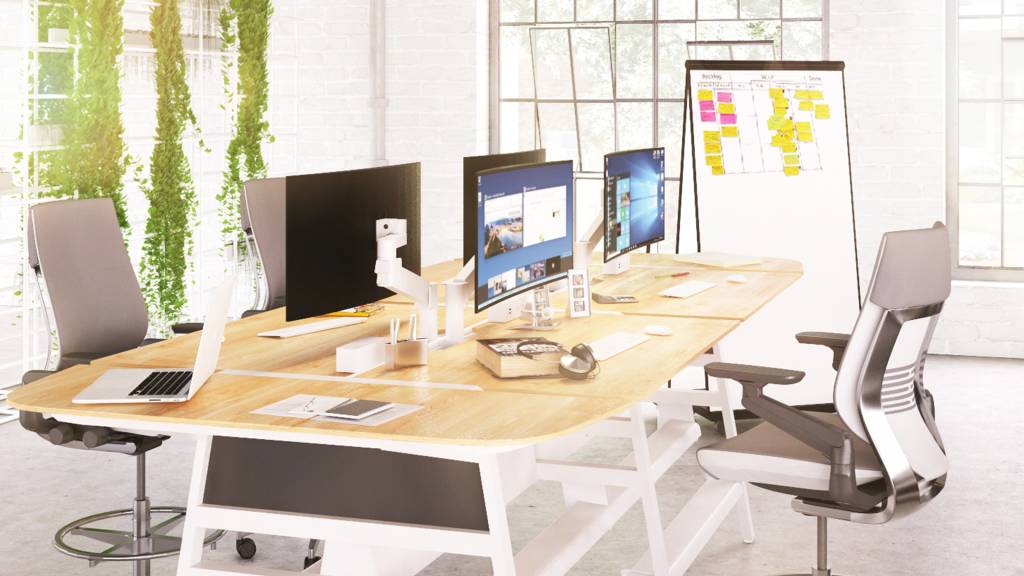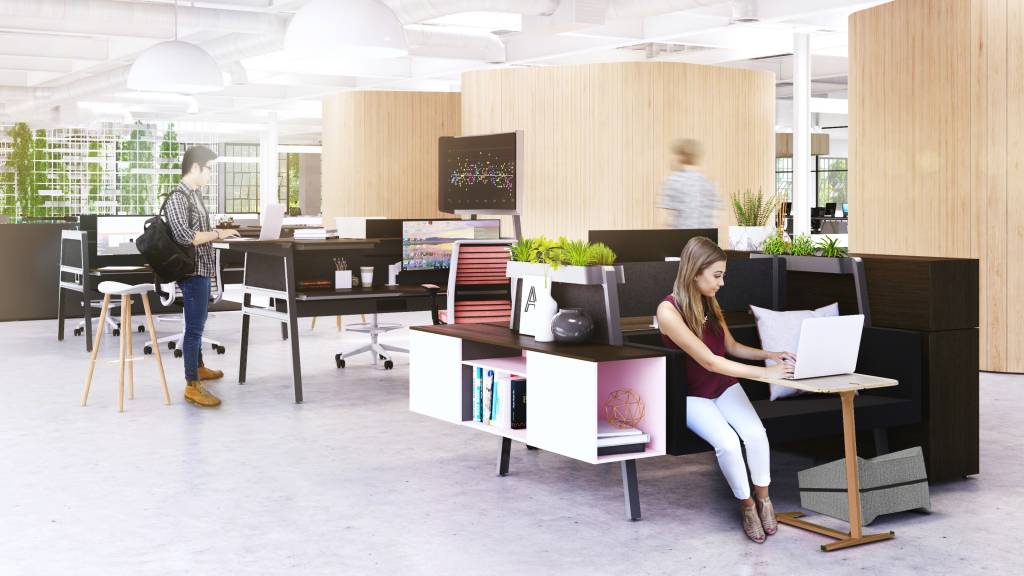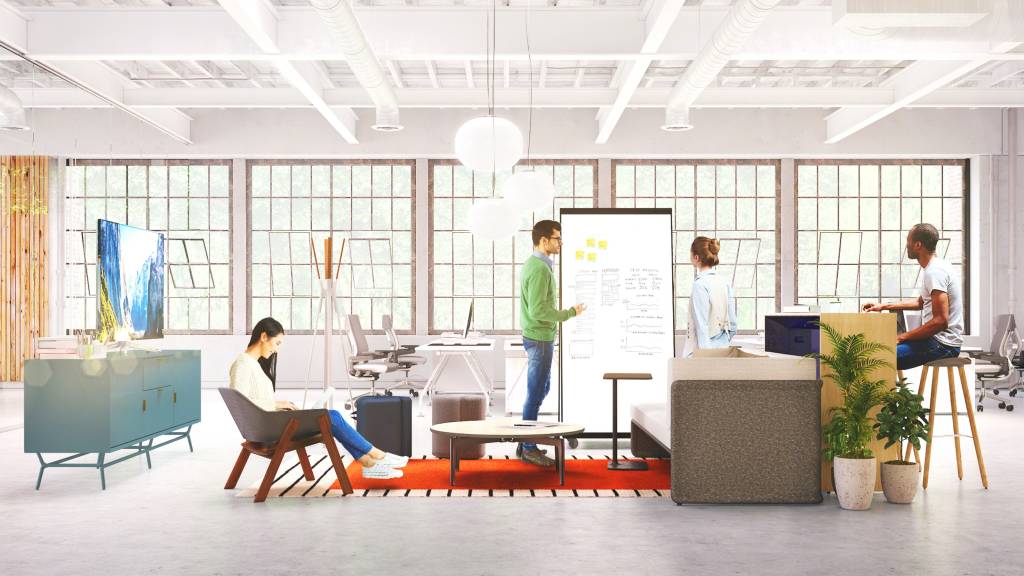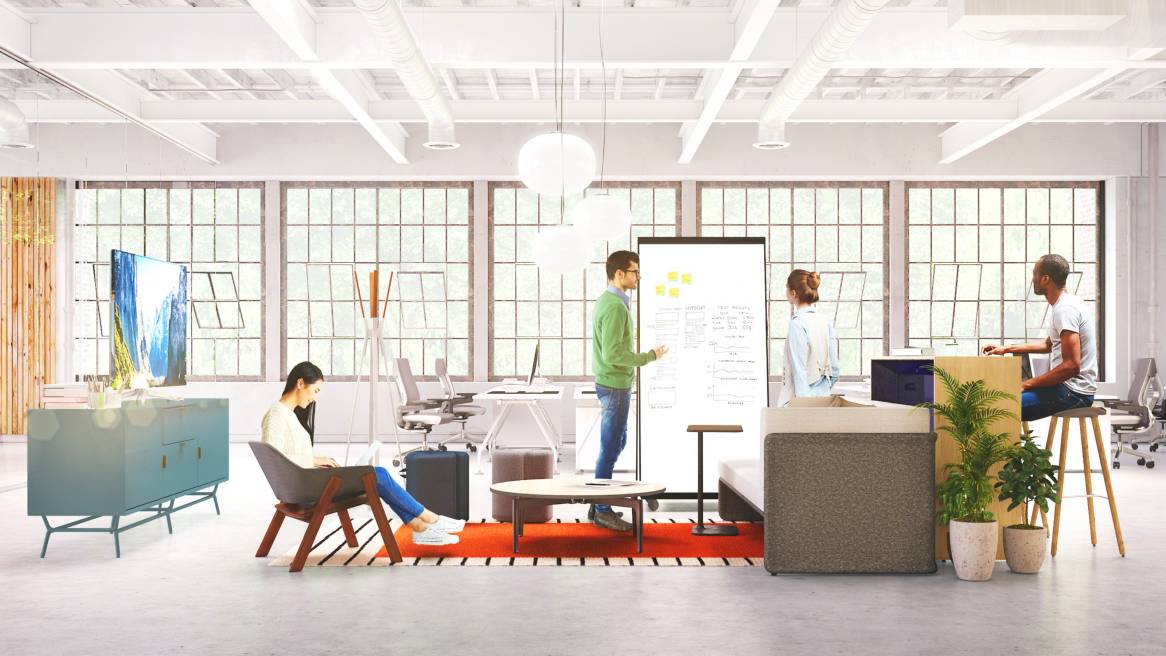Be Agile. Hack Your Space.
The Neighborhood
As the Neighborhoods took shape, Hunnewell’s team owned one of several Agile Studios. They found working in an open team setting instead of siloed workstations helped them solve problems right away without having to schedule meetings. The team’s former space did not allow people to pull up a chair and work next to one another. Now, they can easily ask questions, address obstacles and improve the team’s velocity.
“Velocity measures how much work is completed in a sprint,” says Hunnewell. “As we get better at Agile, our velocity picks up and more work is done in the same amount of time.”
In addition, being able to move furniture within the space lets them support different stages of Agile without having to request service from the facilities team. Different configurations allow for sprint planning (specific requirements for a cycle of work), sprint reviews and brainstorming.
Merkle’s Discipline Team was previously mobile. They found coming together and being physically in the same location in Agile Studios made them much more productive as well.
“Spontaneous collaboration went through the roof,” says Merkle. “We started to iterate more quickly. By being in the same location, I saw a level of experimentation I’d never seen before. The space let us prototype on the fly.”

The Multi-Project team experimented with process and the environment, going as far as adding casters on desks to make them mobile. DeVries and his team wanted to eliminate the creation of knowledge silos that can drag out projects. If only one person has expertise in a certain area and they are busy, on vacation or sick, work would stop.
“Instead of assigning one person to a project, we now assign two people. Because we now all work together in the Agile Studio, we don’t have to hold meetings to talk and learn from one another,” says DeVries. “It’s the deliberate act of choosing to work together that’s helped us eliminate silos and accelerate our projects.”
The three teams also discovered they chose different spaces to do focus work, depending on their process. Hunnewell’s Agile-Focused team found focused, development work would happen inside the Agile Studio. When they needed to take a call or attend a webinar, they’d use a nearby enclave. Merkle’s Discipline team members use the Agile Studio to get individual work done and seek out a meeting room for some types of outside collaboration.

Making Room for the Customer
Connecting and understanding the customer is foundational to Agile work. All three teams described commandeering a lounge seat during the course of their experiment to engage customers in more informal ways and gain a deeper understanding of their needs. Designers turned those informal touchdown spots into a Front Porch, a place that’s more public than actually coming into someone’s home, for each Agile Studio.
“This casual place to connect became a central point of collaboration. Instead of a 30-minute block on your calendar, you had a five minute conversation and didn’t even realize it,” says Merkle. “It was a huge insight that something so small could make such a big impact.”
A big breakthrough came when teams moved this area from the middle or back of the Agile Studio to the front. This way people didn’t feel like they were intruding into the team’s space. The location avoided distractions while still removing barriers to collaboration.

NEXT CHAPTER — The Commons, the Nexus and Retreat
PREVIOUS CHAPTER — Designing for Agile


